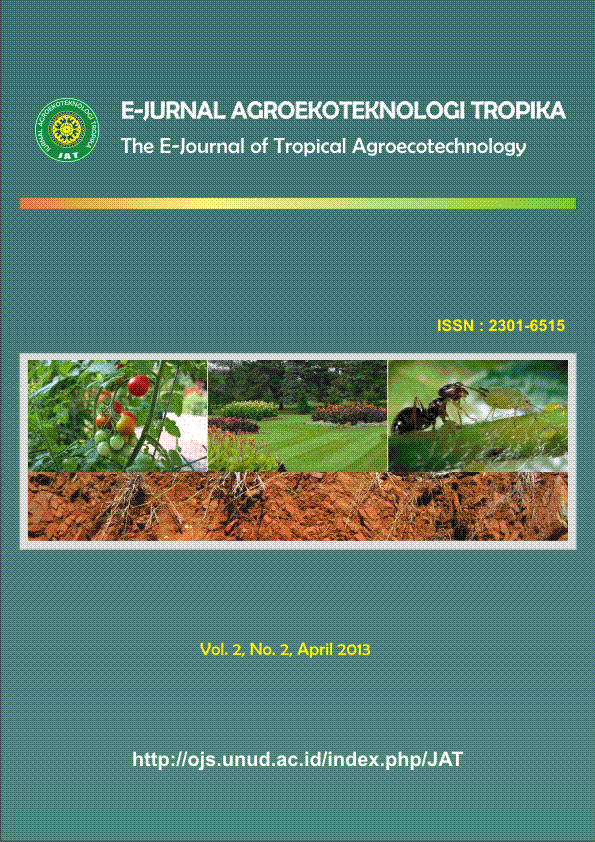Kajian Ketahanan Beberapa Galur dan Varietas Cabai terhadap Serangan Antraknosa di Desa Abang Songan Kecamatan Kintamani Kabupaten Bangli
Abstract
ABSTRACT
Study of Resistance of Some Lines and Varieties of Chili Pepper to Antraknosa Disease in Abang Songan Village, Kintaman District, Bangli Regency
Increased production of chili is necessary due to increased demand of chili. Anthracnose is one of the major diseases in chili. The disease is caused by the fungus Colletotrichum spp. The study was conducted in the village of Abang Songan, Kintamani, Bangli from February to May 2012. The materials used in this study were 20 strains of chili seeds. A total of 16 lines from AVRDC chili seeds and 4 varieties of chili seeds locally as the benchmark that consists of 3 varieties of Balitsa and 1 local variety in Bali. The experiment was conducted using Randomized Block Design (RBD), to obtain the average value of the observed variables were divided into 3 replicates where each replication consisting of 20 plots and each plot consisted of 20 plants. The observations made on the productivity of pepper and disease attacks the intensity and incidence of disease. Productivity is highest chili varieties Cape (46.77 tons), while the highest strain AVRDC is AVPP 0513 (23.65 tons). Lowest local varieties are varieties Kencana (21.23 tons), while the lowest is the strain AVRDC AVPP strain 0718 (4.26 tons). The intensity and the highest incidence is AVPP strain 1003 with 16.67% of the intensity of the attacks included into the category vulnerable to disease and anthracnose disease incidence was 23.61%. The use of high-yielding varieties of seeds is one of the important factors in the success of the production, so the assembly of high yielding varieties of peppers needed to improve productivity.
Key words: pepper, resistance, anthracnose, Colletotrichum spp


